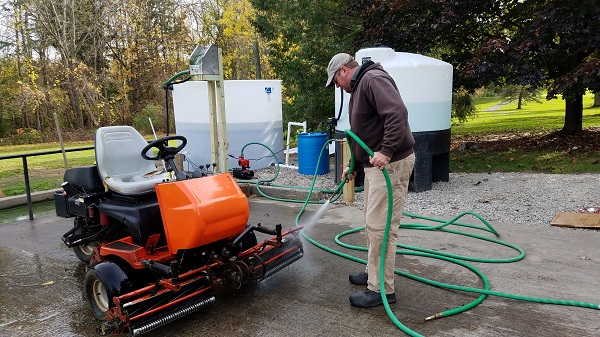Spills happen and being prepared can make the difference between being able to safely contain the spill and not. Have you checked your spill kit recently to make sure you have everything you may need? The following is a checklist for what should be in your spill kit at a minimum to make sure a small issue does not become a bigger problem:
- Gloves (nitrile, at least; foil barrier laminate better)
- Tyvek® coverall
- Goggles
- Temporary storage container for spill
- Sorbent pads and/or socks
- Loose absorbent (SlikWik®, vermiculite)
- Sweeping compound
- Warning sign or caution tape
- Chalk (for marking spill area on floor)
- Dust pan or small shovel (plastic preferable)
- Small broom
- Permanent marker (for marking spill container after clean-up)
Forms of Sorbents
- Booms: cylindrical shape; vary in length and width; used to control and contain spills
- Socks or mini booms: cylindrical shape; vary in length and width; used in facility spill response or maintenance; contain spills or leaks (placed around equipment)
- Pillows: rectangular in shape; used for medium size spills; can be used for leaks and drips
- Pad and rolls: flat sorbent sheets of various lengths can be used to line shelves, catch leaks under machinery and clean up spills
- Loose sorbents: sorbent media that is not contained in any type of pillow or mesh; typically used on small spills
Sorbent Categories
- Universal sorbents: designed to absorb any liquid; they will absorb aggressive liquids such as acids and bases as well as non-aggressive liquids and solvents, such as cleaners, water-based fluids, gasoline and alcohol; made of polypropylene or expanded silicate materials.
- Petroleum sorbents (“oil-only sorbents”): designed for absorption of oil and/or petroleum-based liquids; these sorbents are hydrophobic (will not absorb water or water-based liquids); can be used in maintenance applications for hydraulic and engine oil cleanup; made of polypropylene or treated cellulose.
- Maintenance sorbents: absorb non-aggressive liquids commonly found in manufacturing and maintenance operations (coolants, lubricants, oils, cutting fluids) will pick up water-based as well as oil-based fluids; made of recycled materials, such as cotton, wool, cellulose or corn cob; can also be made of polypropylene or any combination of the materials listed.
Sorbent capacity: The amount of weight the sorbent will absorb in relation to itself (e.g., absorbs 12 times its weight) or the liquid capacity of the sorbent (e.g., absorbs 8 gallons). Because all liquids don’t weigh the same per gallon, the weight capacity of the sorbent actually varies from liquid to liquid. A more accurate way to assess the sorbent capacity is by its liquid capacity.
For more information and suppliers, see Cornell’s Occupation & Environmental Health Department’s Recommendations – Pesticide Spill Kit Contents.

